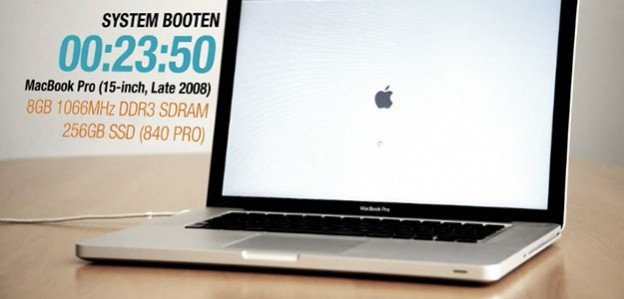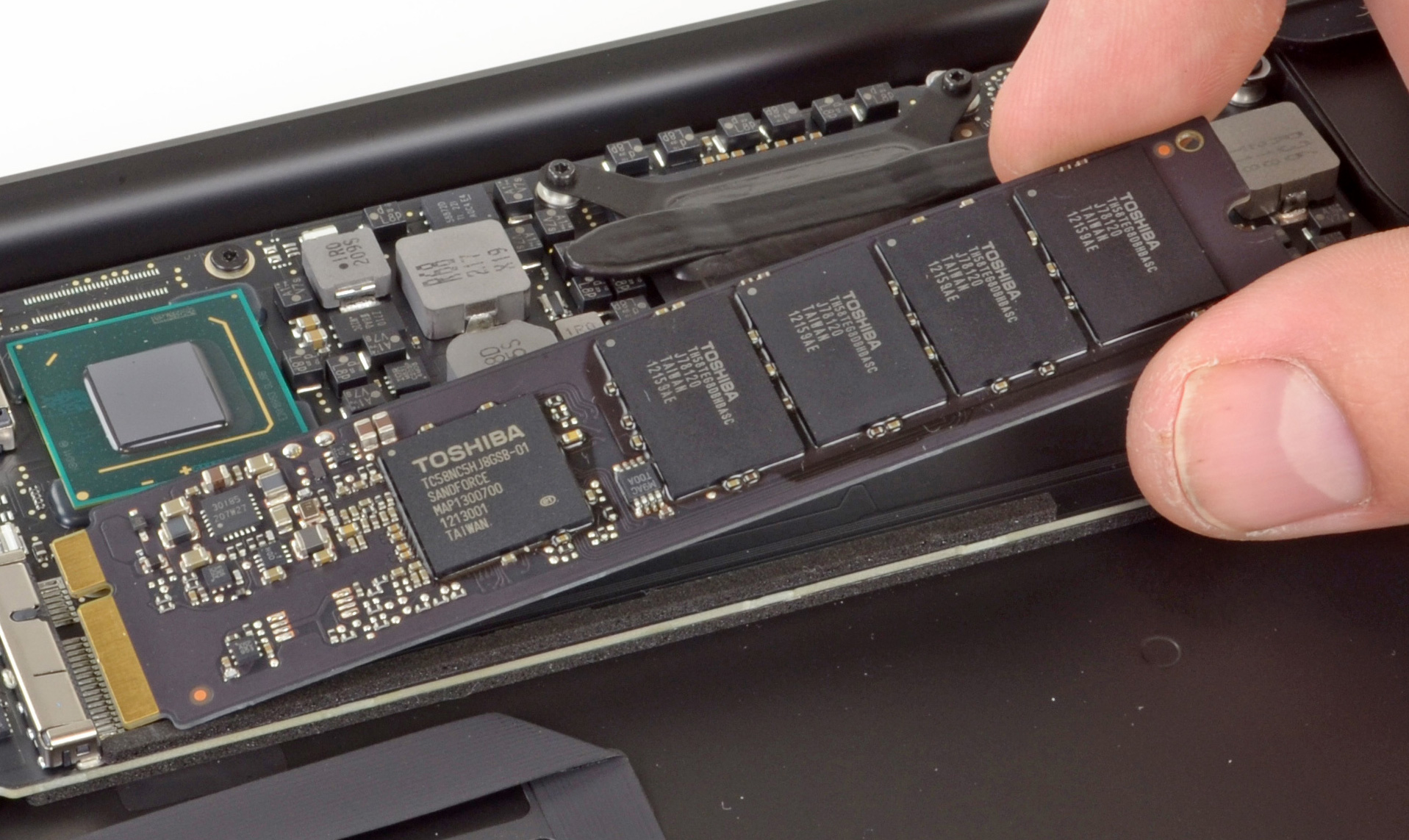
Samsung Ssd For 13 Inch Mac Book 2012
When most of us think of where our Macs store data, we are used to saying “the hard drive”. But the truth is, not all drives are physically spinning HDDs anymore, and the Solid State Drive (or SSD) is becoming an increasingly common upgrade for MacBook Pros of all ages.
How to replace the hard drive in a mid-2012 Macbook Pro, running Yosemite, with. After much looking I decided on the 500GB Samsung 850 Evo, which costs. MacBook Pro 13' Unibody Mid 2012 Hard Drive Replacement.
Because SSDs have a number of advantages compared to HDDs, they are more speedy, reliable and quieter — yes, you won’t hear the click sound from a spinning hard drive. However, SSDs are also a little bit expensive than HDDs though the price difference is diminishing.
In this guide, we’ll walk you through picking the best SSD drive to upgrade your MacBook Pro’s old hard drive or existing SSD and point out how we chose the favorite products along the way.
Quick Summary
Need a brief summary of our top picks? Here’s the best SSD replacement for your MacBook Pro depending on your specific needs.
- For general users who want a quality, affordable SSD, you won’t go wrong with Crucial MX500 — which has exemplary read and write speeds, with awesome energy-saving features that will keep your MacBook from overheating or using up excessive amounts of battery.
- For those of you who want to shop an SSD from a reputable brand, get SanDisk Ultra 3D — which will be able to keep up with your work all day, every day with all-around improvements to your booting, loading, and processing times.
- For power users who want a drive that’s durable and built to last, pick up Samsung 860 PRO — which allows you to make the most of every gigabyte, and meet your need with a great warranty and optimized processing technology.
Who Should Get This?
It’s a digital world, and we all like to have the shiniest gadgets on the market. But do you really need to install a new internal flash storage and dump the old hard disk drive? Well, it all depends and here are our suggestions.
You should consider upgrading your MacBook Pro with an SSD if:
- You work with large files regularly.
- Your MacBook starts up very slow or performs sluggishly in general. This is common for old MacBook Pros such as 2009, 2010, 2011 and 2012 models.
- The internal hard disk drive is showing its age and might die out any day. Here’s a guide that shows how to determine if it’s failing.
- You often use resource-intensive apps such as Adobe Photoshop for photo editing, or Premiere Pro for video editing, etc.
- You need the greater reliability of file storage or want to minimize negative experiences with overheating and potential damage.
- You want to upgrade your MacBook without purchasing an entirely new machine.
You may NOT need an SSD replacement if…
- You mainly use the Internet and document editing functions on your Mac and do not make use of heavier applications.
- You use your Mac fairly carefully or do not keep important or sensitive files on the drive.
- You are using a new MacBook (with Retina display), because “removing the SSD is possible, although it’s not an easy job. For starters, the bottom aluminum side is harder to remove. Then, the SSD is kept in place under the speaker module and has a very strong tape covering the interface port.” as pointed out in BGR.
Internal SSD Upgrade for MacBook Pro: What to Consider?
Capacity
When making a purchase, you may find yourself willing to compromise on storage capacity because of the cost compared to an HDD. Don’t do this! Because storage capacity is a key factor that determines how much use you get out of your new drive, and as computers progress, you’re going to want to have the space to keep up. Additionally, using external drives can slow down your Mac, so it’s best to splurge for extra space now rather than regret it later.
Reading and Writing Speed
Every disk drive is rated with a certain set of speed that describes how fast it can read and write files. The range of a good product usually stays between 500MB/s and 550MB/s. The higher these numbers are, the better. Please note that the advertised numbers are not representative of real-world conditions though, in which you’ll probably experience speed about two-thirds of those rated.
Memory Type – MLC and SLC
SSDs have two types of memory: multi-level cell and single-level cell. The first is cheaper to make and stores more information, but the later has a lower rate of error. However, some SSDs come with error-correcting features to minimize this difference, so it’s up to you to decide which best fits your needs.
Reliability
While judging a book by its cover is generally frowned upon, when it comes to flash storage, it’s perfectly acceptable to judge performance and reliability from the brand name alone. Well-known companies usually have good reputations for reliability and quality control of their products, and you’ll want that name-brand security when it comes to something as critical to daily functions.
Best SSD for MacBook Pro (Internal Upgrade): Our Picks
Note that the SSD drives we recommend below are rated based on our own opinions and preferences. They are by no means made in this order.
1. Crucial MX500 250GB 3D NAND SATA 2.5 Inch Internal SSD
If you are on a budget and need dependability and security for your data, this drive from Crucial fits the bill. Its energy efficient features will protect your MacBook from overheating or draining of the battery. This is an SSD that should meet most users’ needs. In our opinion, 250 GB is the best choice, but you may also choose a larger one such as 2TB.
In Excel for Mac, you can adjust where automatic page breaks occur, add your own page breaks manually, and remove manual page breaks. Insert, move, or delete page breaks in a sheet. Note: To hide the dashed blue lines from sight, on the Excel menu, click Preferences, click View, and then clear the Show page breaks check box. How to remove blue lines in excel for mac.
- Pros: It has four different capacities available for you to choose from. The drive is speedy as it’s rated for read and write speed of 560MB/sec and 510 MB/sec respectively. Also, the drive includes energy adaptive features to prevent overheating and excessive battery use — this is especially helpful if you’re still using an old MacBook with a battery under fairly poor conditions.
- Cons: It’s not the fastest drive on the market and some users may need a spacer to make this fit correctly inside their MacBook.
2. SanDisk Ultra 3D NAND 500GB Internal SSD
SanDisk is a world-famous storage solution provider that offers many types of products especially memory cards, flash drives, etc. If you’re a photographer, chances are you’re using or have used an SD card manufactured by SanDisk. What you may not know is that the company also offers solid state drives. If you need a drive that will perform well under pressure, then Ultra 3D NAND SATA III from SanDisk can definitely fill that need. With lightning-fast read and write speeds, improved startups, and shorter loading times all around, this drive will keep up with you throughout a busy working day.
You are able to modify within each sound, on either side you can find the ‘Filter Modifier’ and ‘Amp Modifier’ panels. Refx nexus 2 crack mac osx.
- Pros: It’s very fast as rated at 560 MB/sec in reading and 530 MB/sec in writing. The drive also comes with specialized caching methods to enhance performance while maintaining a cool and quiet operation. Plus, there are a variety of available storage capacities to choose.
- Cons: It doesn’t come with a cloning software which means you need to take some time to transfer the data from the old drive to the new one.
3. Samsung 860 PRO V-NAND 1TB SSD
Boasting a 5-year warranty, cloning software, and a respected name, it’s hard to know where to start with this Samsung drive’s best attributes. You’ll benefit from increased speeds for loading applications and saving files, as well as a variety of options for storage capacity to meet your specific needs.
- Pros: It’s extremely dependable and known for use among heavy users, will work efficiently with your MacBook (reads 560 MB/sec, writes 530 MB/sec), and includes an outstanding warranty. Also, it uses 3D V-NAND to increase speed and rated for 150 terabytes written — more than enough to outlast your MacBook Pro itself.
- Cons: Some users reported that they had problems with the built-in data migration software.
Useful Tips and Resources

Whenever you consider making any significant changes to your MacBook Pro, it’s always a good practice to make sure you have a recent backup of all the important files. See this Apple guide for different ways to back up a Mac machine. Therefore, when it comes to replacing your Mac’s internal hard drive with a new SSD, you’ll want to make sure that everything is backed up properly in case any potential risk.
The SSD installation process is fairly simple to computer geeks, but general users may find it challenging. That’s why this guide from CNET is worth checking out, it features a step by step tutorial on how to upgrade the internal drive and walks you through the precautions and help you stay on your feet.
Using a MacBook Pro with Retina display (most models after the year 2013)? These Macs don’t officially support being taken apart so you should consider carefully whether or not you want to go through with it. However, if you do decide to take a look under the hood, LaptopMag has a great tutorial on how to do so without jeopardizing your Retina MacBook in the process.
Also, if you decide to replace the old drive and install a new SSD all by yourself (aka, DIY), make sure you get the right screwdrivers ready as you need them to open the bottom case of your MacBook Pro. The RION Pentalobe 6 Pentalobe 5 Phillips Tri-wing Screwdrivers is a great choice.
Final Words
It may seem like SSDs have been slow to take off, but they really are the drives for many laptop computers in the future. They’re generally faster, more durable, and more efficient than any similar-sized HDD, and you can count on them to store your files and applications safely.
If you’ve decided to make the internal SSD upgrade for your Mac, tell us what your experience was like. We’d love to hear which drive you chose and how your MacBook Pro functioned afterward.
Hi There,
I am running out of space on my SSD on a regular basis, despite off-loading tons of stuff to an external drive. It really is time to increase the hard disk space!
Two things I was wondering:
1) I've read in a previous post around here that there are no 4-lane wide 512 GB SSD available for the aftermarket. Apparently these SSDs (2-lane wide) run slower. Has this changed, are there any 4-lane SSDs available in 512 GB size?
2) Is there a way to duplicate my 256 GB drive to the 512 GB (via Carbon Copy Cloner, or similar), and then resize the partition to 'enlarge' the drive from 256 to 512 GB? I don't want to start anew with another system. I've gotten so much software and configuration on this computer, it would take a year to rebuild it all.
Any links to parts that might work for me, or how I might go about the drive thing would be greatly appreciated!
Cheers,
Dave
Is this a good question?